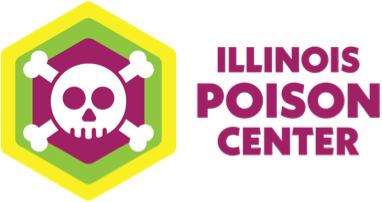Button Batteries
Most households have something with tiny button batteries inside. Toys, hearing aids and musical greeting cards are common items powered by button batteries. These batteries can be as small as a centimeter and are a significant hazard. That's especially true for young children who may put them in their mouth, nose or ears. Among adults, elderly individuals may accidently swallow a hearing aid battery when distracted or confused.
Hazards of Button Batteries
Button batteries can cause internal burns if ingested or inserted in the nose or ears. When swallowed, these batteries can become lodged in the esophagus, causing a life-threatening medical emergency. Anyone choking or in respiratory distress from swallowing a button battery needs immediate medical assistance. Call 911 right away.
Because they're small in size, button batteries are an easy target for children. Be aware that children may ingest or insert button batteries in their mouth, ears and nose. Burns can develop within two hours of exposure. Burns are thought to be caused by:
- Electrical current from the battery
- Leakage of corrosive contents
- Physical pressure against the esophagus
Signs and Symptoms
Watch for these symptoms of a button battery lodged in the esophagus:
- Choking symptoms—gagging, wheezing and/or difficulty breathing
- General symptoms—vomiting, coughing, refusal to eat or drink, drooling, difficulty swallowing and poor appetite
If a toddler unknowingly swallows a button battery, the symptoms may be mistaken for the common cold.
It’s less common for children to stick a button battery up their nose or in their ear. But doing so can cause damage. A battery that gets stuck in their clothing and presses against the skin can also cause damage.
What to Do
- Children or adults who are choking or in respiratory distress require immediate medical assistance. Call 911 right away.
- Anyone with symptoms after a suspected button battery ingestion needs immediate medical attention. Go to your local hospital emergency department for evaluation. Depending on the battery’s location, a gastrointestinal specialist may need to remove it.
- Children under the age of 12 who do not have any symptoms will need an X-ray to determine battery’s location.
- Anyone with a button battery in their stomach or intestine and are symptom-free may be discharged home with instructions to monitor for symptoms and to check their stool to confirm the battery has passed out of their system.
Honey Helps
Honey can prevent or delay the development of esophageal burns.
- Give 2 teaspoons of honey every 10 minutes in children ages 1 and older if they have ingested a button battery. Honey has been shown to decrease damage from the lodged button battery. By coating the battery and esophagus honey can reduce contact and the risk of tissue damage.
- You can give up to six doses of honey as long it does not delay getting the affected child or adult to a hospital emergency department
- Do not give honey to children under 1 year old due to the risk of developing botulism.
IPC is here to help. Call IPC immediately at 1-800-222-1222 if you suspect a child or adult has been exposed to button batteries. Calls are free and confidential. IPC toxicology experts are available to answer your questions 24 hours a day, seven days a week. You can also contact the National Battery Ingestion Hotline at 1-800-498-8666.
